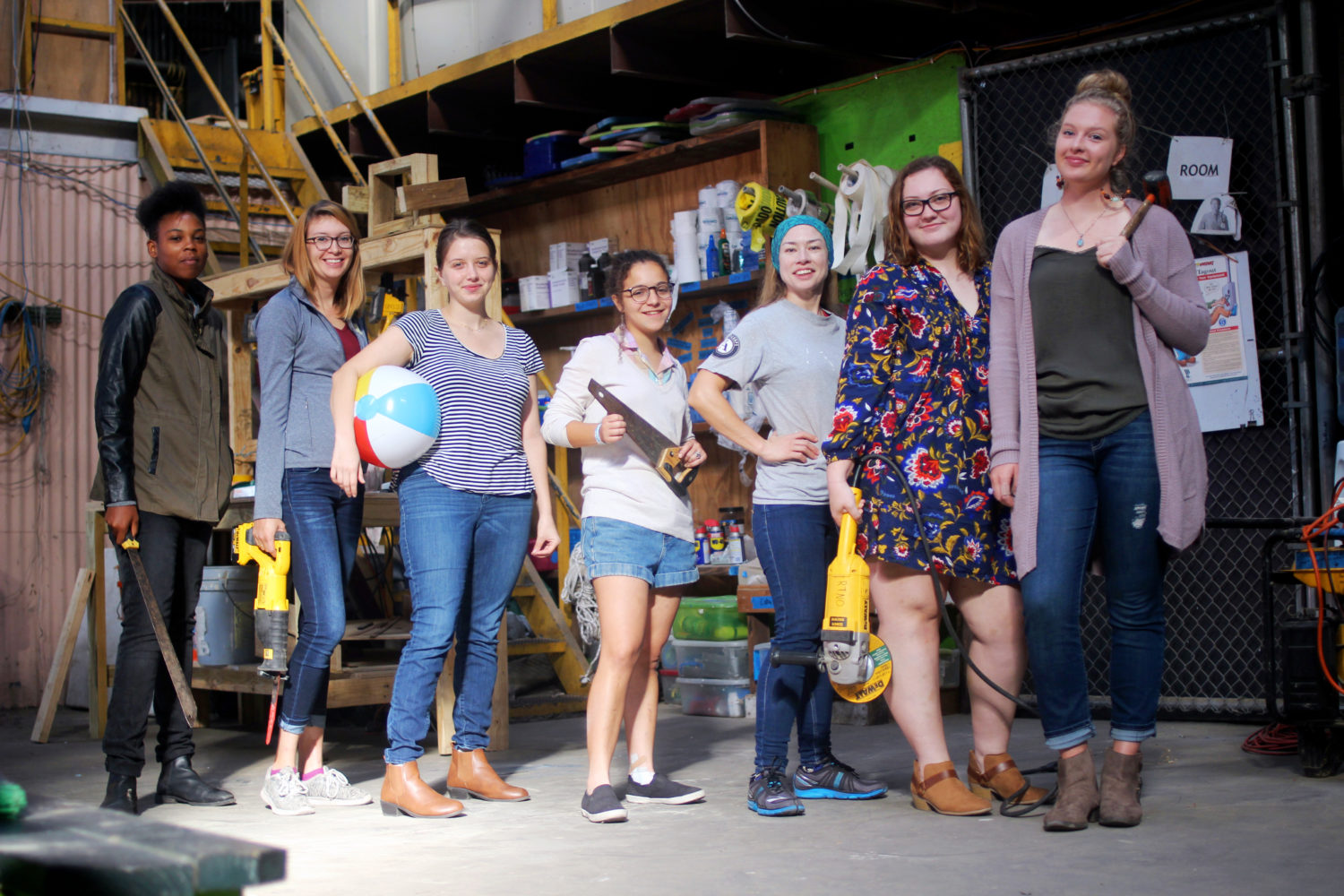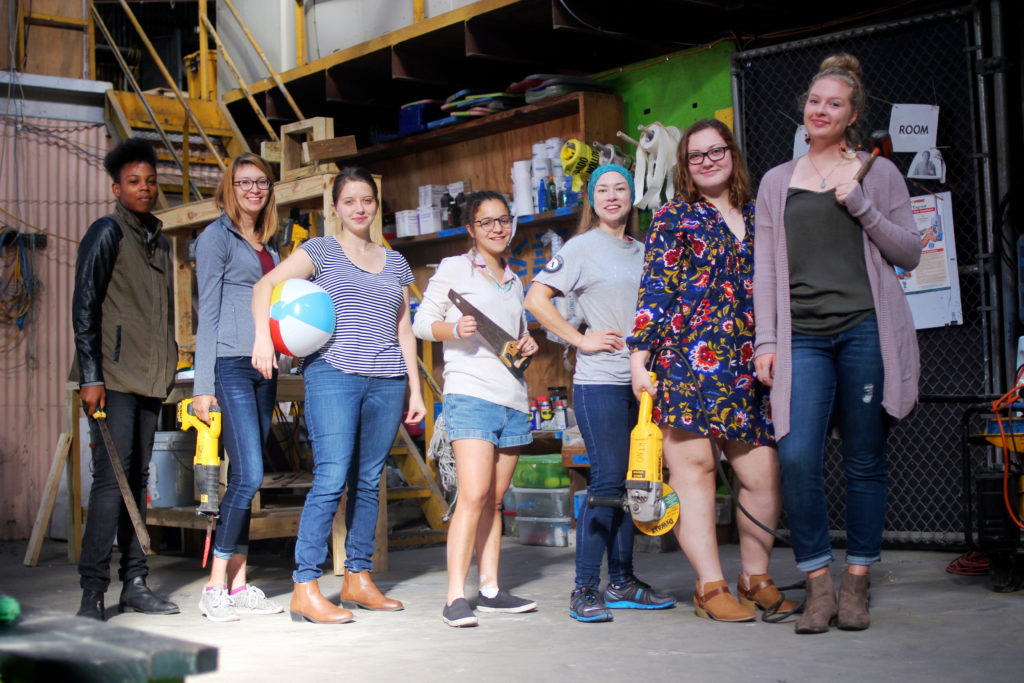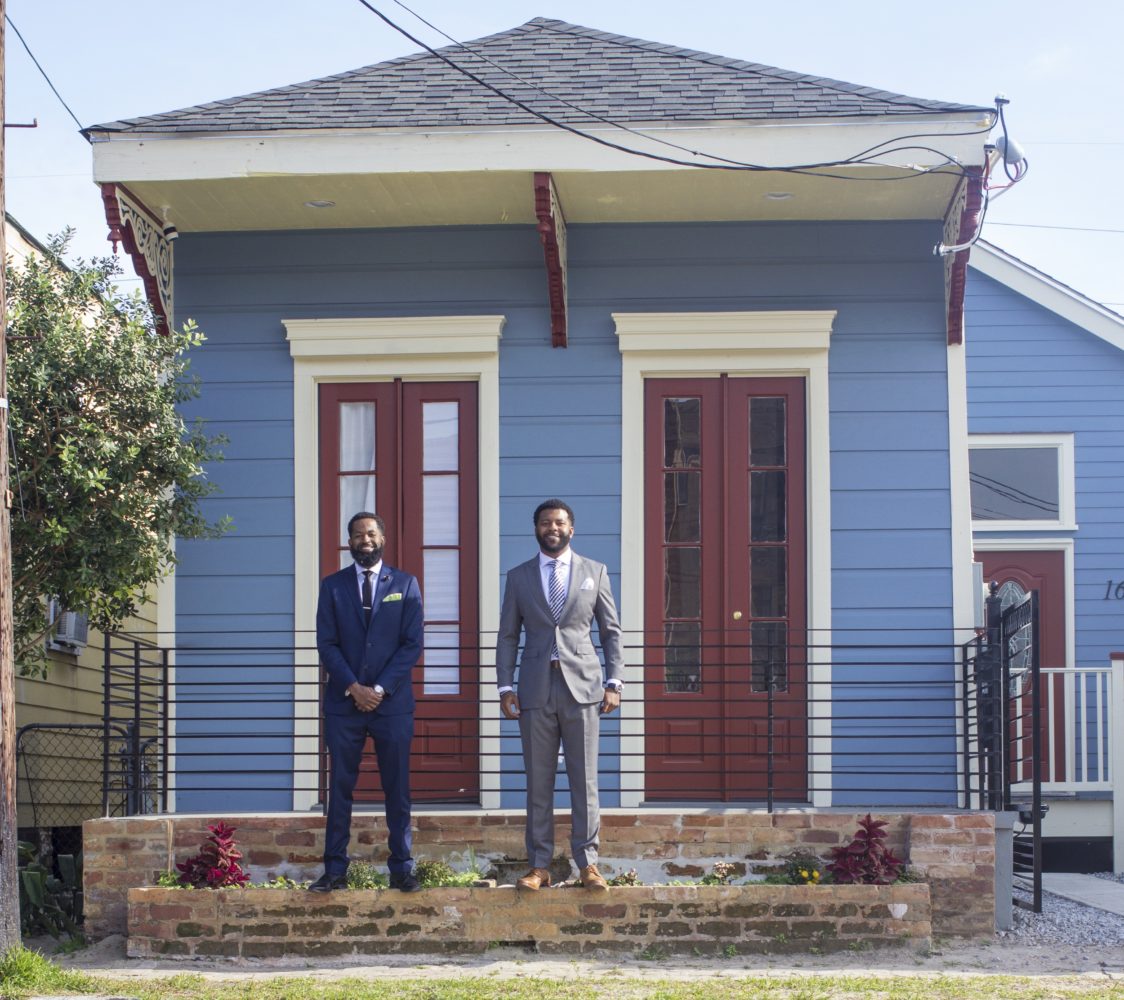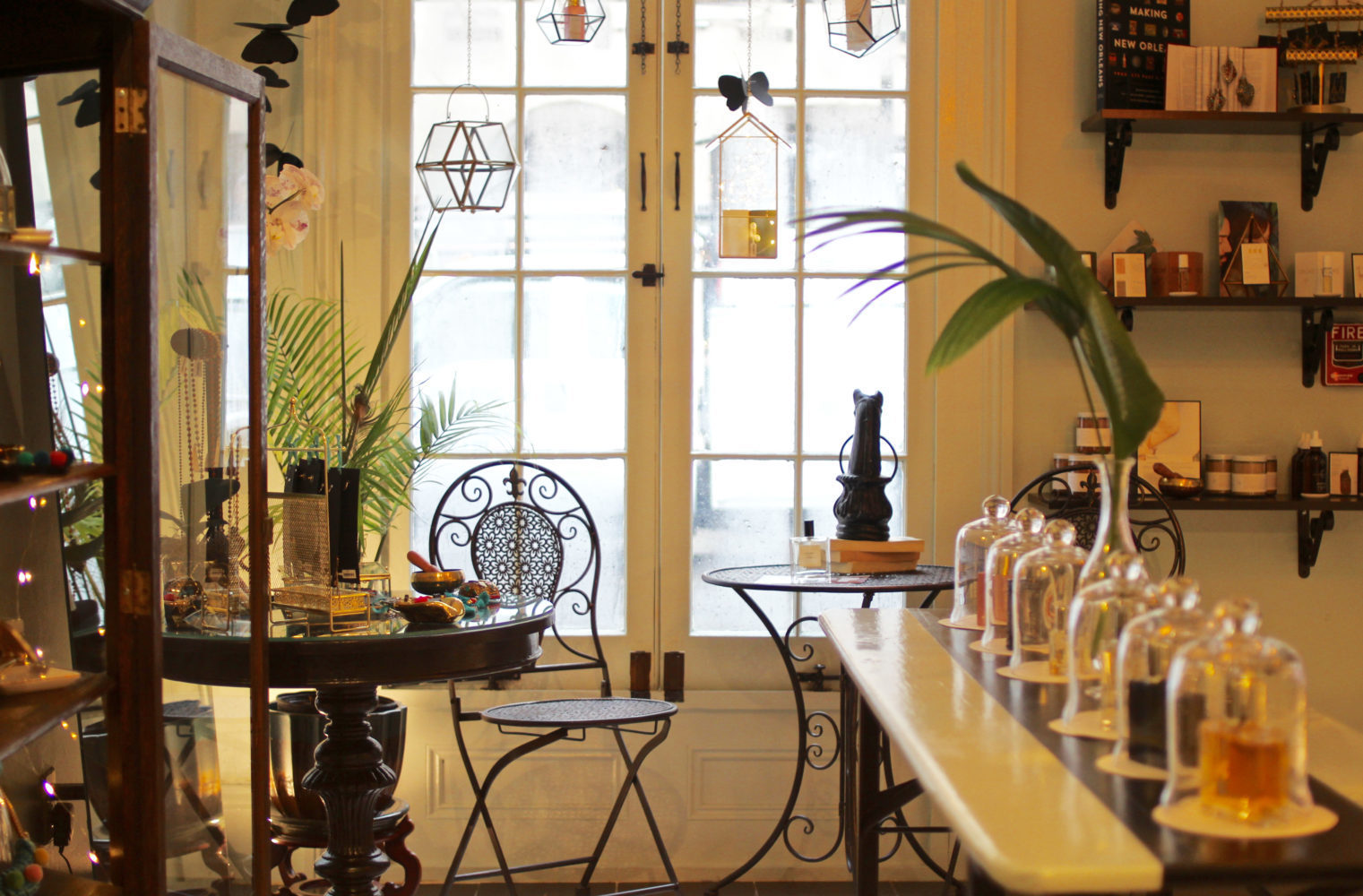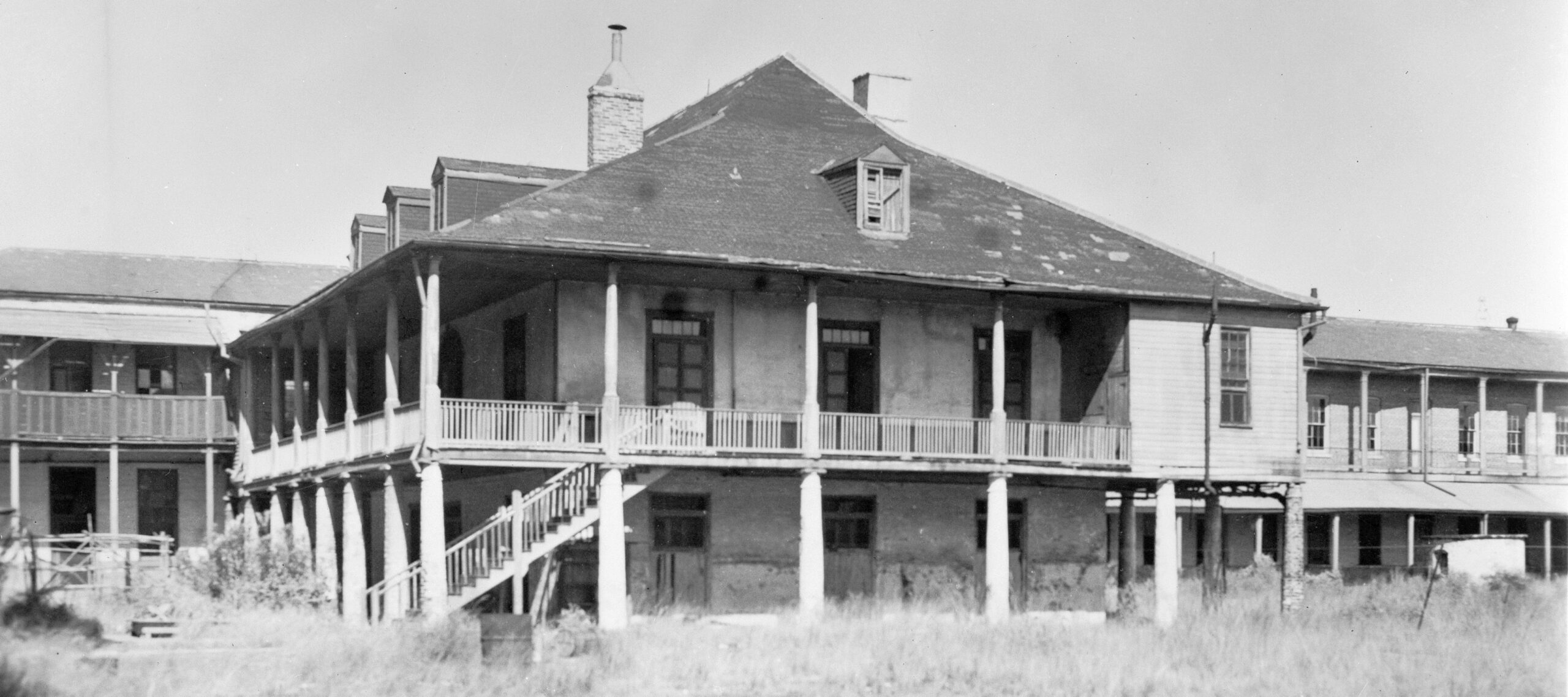This story first appeared in the December issue of the PRC’s Preservation in Print magazine. Interested in getting more preservation stories like this delivered to your door each month? Become a member of the PRC for a subscription!
In New Orleans, a city rich with historic buildings, it is not unusual to see construction teams working on homes, climbing ladders and wielding power tools as they set about repairing houses and offices. What is more unusual to see, however, is women working in construction. The tired stereotype one might imagine is a row of burly men hammering and painting and sanding. And yet — almost all of Rebuilding Together New Orleans’ Americorps construction crew is female.
Rebuilding Together New Orleans, a program of the Preservation Resource Center, provides free home repairs to low-income households where the homeowner is disabled, a veteran, or a single head of household with young children. The repairs include replacing leaky roofs, rotting supports and siding, exterior paint work, wheelchair ramp construction, and other accessibility modifications. The organization hires AmeriCorps members — American citizens who work full-time in exchange for a small stipend and education award — to assist in both direct repairs and in their office. Only around nine percent of construction workers are female, according to statistics from the U.S. Bureau of Labor, which makes Rebuilding Together’s field team of six women and one man all the more unusual at about 85 percent female.
Though construction work is overwhelmingly male, nonprofit work is not. Most workers at nonprofits are female (though women are still underrepresented in nonprofit boards and executive positions). Additionally, over 70 percent of Americorps members are women, a trend that is 20 years in the making.
Theresa Visuri, an Americorps member from Michigan who often carries a 40-pound toolkit in each hand, earned an associate’s degree in construction before beginning her AmeriCorps term this past February. She explains that her upbringing was a large part of her initial attraction to this kind of hands-on work.
“My dad was very open with me, and he piqued my interest [in construction],” Visuri said. “I wanted to further my education. Knowing that my classes would all be with men made me want to show them that I could do it too, and that I could do it better,” she said.
“I wanted to prove it to myself, too,” she added.
In jobs such as construction, where there are many possible jobsite hazards (working with power tools and on tall ladders, to name a couple), communication is extremely important to ensuring a safe worksite. One case study, reported by the Harvard Business Review, showed that when an oil company trained the workers to be more open and communicative, there was an 84 percent accident reduction rate.
With the share of women in construction and heavy industry on a slow incline, the macho image of builders is eroding. Naturally, after centuries of ingrained ideas about gendered roles, there are still implicit gender biases, but they are beaten back by increased representation.
Another member of the RTNO Americorps field team, Christine Padgett, has noticed that those who have actually seen women doing repair work don’t experience the cognitive dissonance typical of others when they find out she’s in construction. Padgett, a small woman with a blond braid, bright blue eyes and running shoes, explains that those who have seen female construction workers in action have less of a preconceived notion of what a typical hardhat wearer “should” look like.
“I find that people who have experience with this kind of work are less shocked by what I do,” she said. “They don’t have prejudices regarding working with women, or trusting a woman to do a good job.”
“The whole team’s women?” one homeowner asked Padgett as she and two other Americorps members retrieved ladders and other building materials from his yard. She and her team member smiled.
The full disclosure is that I am one of the women on the RTNO field team. I joined with zero construction skills; growing up as a girl in New York City, home improvement and construction skills were never expected from me. It would be empowering, I decided, to beat sweltering heat, complete ignorance and inherited klutziness to learn about the construction trade.
“She’s little, but she’s strong!” another RTNO homeowner, Bernice Jones, remarked with a smile as she watched me carry an extension ladder around her house. Jones is 87 years old — when she was young, it would be a freak occurrence to see a woman working in New Orleans professionally repairing homes. As the team does often lead crews of volunteers, they often subvert the stereotypical gender roles entirely, instructing both women and men on carpentry, home renovation and interior demolition.
“It really does feels empowering to be in this line of work, learning new skills and getting to teach others. I want to continue in this line of work,” Padgett said.
Through all the sheets of polyvinyl plastic and strokes of latex paint, the work of creating safe homes for Rebuilding Together New Orleans’ clients remains at the center of our work. That we get to defy stereotypes and become stronger people at the same time is just a bonus.
The ladies of Rebuilding Together New Orleans’ Americorps Program, from left to right: Cherish Stephens Vickers, Theresa Visuri, Sarah Tornay, Jesse Baum, Christine Padgett, Courtney Davies and Lauren Watson. Photo by Liz Jurey.



